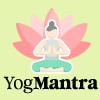YogMantra | Why Willpower Fails Against Digital Addiction—And How Yoga Can Help

Last Updated:July 19, 2025, 10:19 IST
Yoga offers a three-fold path to fight the digital onslaught: Adopting a Yogic outlook towards priorities and the meaning of life, practices of Yoga, and lifestyle changes
When you realise your willpower is no match for the beast of digital addiction, look to Yoga for help. (Pixabay)
You promise yourself you won’t check your phone. But five minutes later, you’re back to scrolling and checking for notifications. You realise your willpower is no match for the beast of digital addiction.
“The mind cannot be controlled by the mind. Willpower may work only for short durations—and that too, not always,” says Yoga guru and scholar Dr N Ganesh Rao, founder of ACT (Authentic, Classical, Traditional) Yoga.
In Yoga, stress is seen as the uncontrolled speed of the mind. Since the mind is made of the constantly shifting gunas or qualities—sattva, rajas, and tamas—its instability is natural.
If the mind cannot be controlled by itself, what then is the way out? Dr Rao says Yoga offers a threefold path to fight the digital onslaught:
1. Adopting a Yogic outlook towards priorities and the meaning of life,
2. Practices of Yoga, and
3. Lifestyle changes
Last week, we examined the dangers posed by digital media through a Yogic lens (read here). “This already problematic mind, which by its very nature is diseased, is made even more disordered by the deluge of information,” said Dr Rao.
In this follow-up article, he details the tools Yoga offers to tackle the growing crisis. Here are edited excerpts from an interview.
HOW YOGA STEERS THE MIND
The mind can be advantageously controlled by a) Breathing Practices, and b) Developing Awareness.
Through Breathing. There are two ways to do this:
• When the mind is disturbed, simply witness your breathing — without interfering with it. Because mind and breathing are linked, any disturbance in the mind disturbs the breathing.
Just watching the breathing helps eliminate the disturbance in breathing. When the breathing becomes normal, the mind also regains its calm.
• The slower the breathing, the calmer the mind. A few minutes of daily Pranayama, done as slowly as possible—with gradual lengthening of inhalation and exhalation—can go a long way in calming the mind.
Through Awareness. This is the most effective way to bring about samatvam (equanimity) in the mind. All Yogic practices, in fact, aim to develop awareness.
All of us are wiser in retrospect—“I shouldn’t have done that, or said that”. The question is: where were you when you were doing or saying it? You’re not aware!
Awareness means knowing what you’re doing—or what’s happening within—as it happens. Adopting the sakshi bhav or the witnessing attitude — and, real-time witnessing.
PRATYAHARA—TO TURN SENSES INWARDS
Pratyahara is, in fact, a product of maturity and experiential wisdom rather than a particular practice.
When we realise the external world is not ultimately fulfilling, we turn inward. This is Pratyahara, the beginning of the inward-going process. From living at the body-mind level, we are now on the path of energy and consciousness.
Our sense organs are naturally externally oriented—eyes see outside, ears hear outside, nose smells outside, etc. This is why it’s easy to get distracted by the external world.
In Yoga, Pratyahara is the inward withdrawal of these five jnanendriyas (sense organs). It is the bridge between Bahiranga Yoga or ‘Preparatory Yoga’ (Yama, Niyama, Asana, Pranayama, Pratyahara) and Antaranga Yoga (Dharana, Dhyana, Samadhi). In Patanjali’s Ashtanga Yoga, Samadhi is meditation.
Two examples of Pratyahara:
• Shanmukhi Mudra — where closing the six doors on the face ‘symbolises’ Pratyahara.
• Pranayamic Pratyahara or Vayu Pratyahara (mentioned in Yoga Yagnavalkya)—where, in the Kumbhaka phase, the breath is held at vital points in the body.
MEDITATION—TO TRANSFORM THE MIND
Meditation begins with restraining the tamasic (lethargic) and rajasic (restless) tendencies of the mind—thereby increasing its sattvic (concentration) nature.
Once the mind attains concentration, we resort to either:
• concentrative meditation — where you choose an object to visualise and focus upon, or
• mindfulness meditation — where you observe the contents of the mind without reacting or responding.
The goal of meditation is to reach the ‘No-mind state’ and finally to attain Reality, which is beyond the mind.
Bahiranga Yoga (lifestyle) prepares the mind by making it free of distractions and disturbances.
In Patanjali’s Yoga, meditation begins with Dharana or concentration, develops into Dhyana and progresses to various states of Samadhi. During Dharana and Dhyana, the mind gets purified of its suppressions, repressions, conflicts, and conditionings.
From being a normal mind, which is like a torch, it now becomes a laser beam.
REDUCING RESTLESSNESS
In Classical Yoga, Asanas are done as slowly as possible, which curbs restlessness and enhances concentration.
Pranayama is the best antidote to stress and anxiety. Mantra japa is also an effective tool against restlessness and anxiety.
LIFESTYLE CHANGES TO SUPPORT YOGIC LIVING
Use these simple suggestions not just to counter digital urges but also lead a richer life.
Could you:
1. Revive the joy of reading — by holding a real book and reading for just 15 minutes a day?
2. Replace passive screen time — with a physical activity like gardening, walking, or cleaning the house?
3. Pick up a sport like badminton or swimming — because sweating is one of the most effective antidotes to mental ill-health?
4. Participate in Nature — by going on treks, hikes, or long walks in jungles?
5. Engage with music — by learning to play an instrument or sing, rather than just listening passively?
6. Help someone else — instead of being addicted to oneself? When going through mental health issues, try helping someone else. Their “thank you” can shift something inside you and your loneliness, depression often disappear.
7. Seek out Satsang — the company of like-minded people? But don’t just discuss issues; do things together.
The author is a journalist, cancer survivor and certified yoga teacher. She can be reached at swatikamal@gmail.com.
view comments
- First Published:
[title_words_as_hashtags





